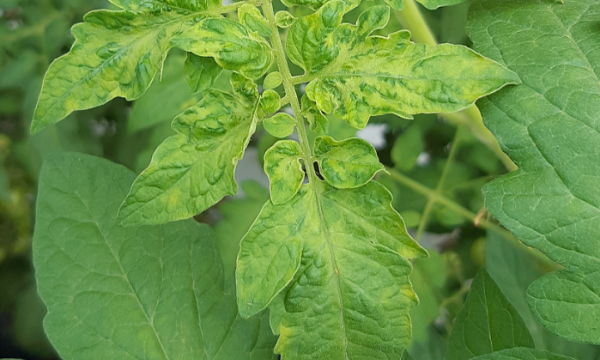General Plant pest: Yellowing viruses in sugar beet cultivation
What are yellowing viruses?
Yellowing viruses can lead to significant losses in sugar beet cultivation, sometimes as much as 50%, both in terms of root yield, sugar content and sugar extractability. The impact has increased significantly especially in recent years. Thus, these viruses are now frequent in the major European sugar beet regions, including France, Germany, Poland, the United Kingdom, the Netherlands and Belgium.
There are several viruses within the group of yellowing viruses that cause infections in sugar beet:
- beet yellows virus (BYV),
- beet mild yellowing virus (BMYV),
- beet chlorosis virus (BChV),
- beet western yellows virus (BWYV) and
- beet mosaic virus (BtMV).
Yellowing viruses have become increasingly common in important sugar beet growing regions in Europe, including France, Germany, Poland, the United Kingdom, the Netherlands, and Belgium. The impact of these viruses on sugar beet can be substantial, with losses of up to 50% in terms of yield, sugar content, and sugar extractability.
Symptoms?
Yellowing viruses in sugar beet can be recognized in the field through several symptoms, including:
- yellowing and orange-yellowing of the leaves:
- between the veins
- along the leaf margin
- in a mosaic pattern
- complete discoloration
- the formation of thick and leathery leaves
- the appearance of red and brown necrosis
- regrowth of young leaves in the heart of the plant
- leaf distortions.
These symptoms can, however, be confused with symptoms caused by other factors such as water stress, nutrient stress, and soil compaction.

How does virus transmission occur?
Yellowing viruses are exclusively transmitted by aphids, with the green peach aphid being the primary vector. Other aphid species, such as the black bean aphid, the potato aphid, and the shallot aphid, also play a significant role in the spread of these viruses. Effective aphid control is therefore crucial in the management of yellowing diseases.

Why are yellowing viruses once again a threat to the sugar beet industry?
Until recently, neonicotinoids were used to control yellowing diseases. Neonicotinoids are a group of insecticides that are extremely effective in killing aphid vectors. However, due to potential health risks to humans and the environment, there has been a European ban on the use of neonicotinoids since 2019. Since this new regulation, little has been done to find sustainable and effective control alternatives, which puts the sugar beet industry at risk again.
How can we address the problem of yellowing viruses?
Once yellowing viruses are found in the field, control can be challenging. To prevent further spread, timely removal of infected plants can help. Currently, chemical sprays are recommended to control aphid populations and limit the transmission of yellowing viruses. Unfortunately, the number of effective active substances is limited, and aphids often develop resistance to these products. Furthermore, many of these substances are not selective, killing natural enemies of aphids. They may also pose potential health risks to humans and the environment, which creates more and more social resistance. At present, there are also no tolerant or resistant cultivars available that growers can use to address yellowing viruses in a sustainable and environmentally friendly way.In a new project called VirBiCon,, IRBAB-KBIVB, KU Leuven, and ILVO (Laboratory of Plant Virology) aim to develop a sustainable and integrated management strategy for yellowing viruses in sugar beets. This management strategy will be based on several important IPM pillars: prevention, monitoring, biological aphid control, biological virus control and, when really necessary, chemical control.

